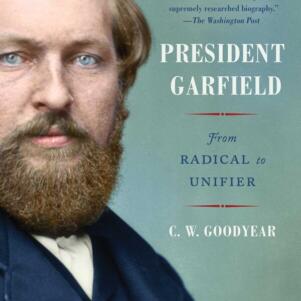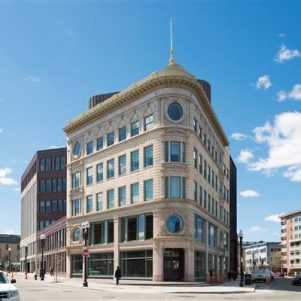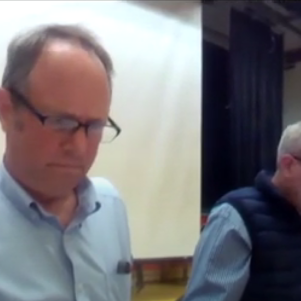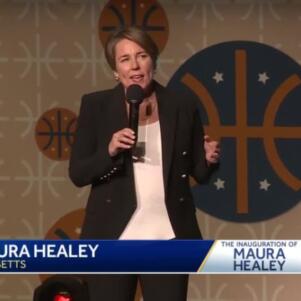The BLOG: Voices
Boston’s pro-life history: Storer pushes for unborn protections
Frederick N. Dyer | April 27, 2016
Earlier blog entries — Read Part I here and Part II here — showed that abortion was frequent in Boston in the 1850s and discussed three physicians who were strongly and vocally opposed, John Preston Leonard, David Humphreys Storer, and his son, Horatio Robinson Storer. More on Boston’s abortion problem in the future, but today we will provide some background on Dr. Horatio Robinson Storer, who would become the key figure in the “physicians’ crusade against abortion” that led to the passage of stringent laws protecting the unborn in U.S. states and territories between 1860 and 1880. Storer was born Feb. 27, 1830 in Boston to Dr. David Humphreys Storer and Abby Jane Brewer Storer. He was educated at the Boston Latin School and Harvard University where he won the coveted Bowdoin Prize in 1850 for “The History and Resources of the Valley of the Mississippi” [Harvard Archives HW 89.165.221]. Following graduation from Harvard in 1851, he attended the Harvard Medical School obtaining his M.D. in 1853. He married Emily Elvira Gilmore in July 1853 and a few months later the couple traveled to Europe where Horatio continued medical studies. The last year abroad was spent in Edinburgh, Scotland where he studied with Dr. James Young Simpson who discovered the anesthetic properties of chloroform. It may have been chloroform’s reduction of Queen Victoria’s labor pains that resulted in Simpson becoming Sir James Young Simpson. Horatio returned to Boston in 1855 with tentative support and later strong support of his mentor’s chloroform. This led to conflicts with Boston physicians who virtually worshipped ether whose anesthetic properties were first demonstrated in Boston.
Horatio began medical practice in Boston largely specializing in the diseases of women. He thus became aware that many of these women suffered from the after effects of induced abortion. By 1857 he was committed to a crusade against the prevalent abortions that he viewed as a serious problem. He requested that a Committee on Criminal Abortion be created at the American Medical Association, and this was done at their annual meeting in Nashville in 1857. He was appointed chairman. However, Horatio’s illness would delay the critical AMA report on Criminal Abortion until 1859.
In 1857 he also began a report on Criminal Abortion for Boston’s Suffolk District Medical Society. His intention was to pressure the Legislature to improve the laws against abortion which failed to recognize the unborn victim. He was met by resistance from other Boston physicians. Boston’s most famous physician, Jacob Bigelow, pointed out that a physician could go to prison for treating amenorrhea if such a law were passed. Obviously savvy married women did not approach doctors for abortions, but only to have the plug removed that was stopping menstruation. Years later (1897), Horatio provided a summary of this early activity in Boston:
… in 1857, I had brought the question of the prevalence of criminal abortion, as evidenced in gynecological practice, to the attention of the Suffolk District Medical Society, of Boston, which comprises all the practitioners of that city in good standing. I was there peremptorily challenged by the older men, who considered the investigation both injudicious and improper. Several of these, who were afterwards my critics at the Academy, were determined to prevent the threatened scandal, as they considered it. One of them, a professor at Harvard and the leading physician of Boston, thought to annihilate me by explaining that he had been in practice for nearly fifty years (he began in 1810), and had never known a single instance of criminal abortion, and here was a young man who had been his pupil, soberly relating the histories of scores of such cases. The only answer required was to ask Dr B. if he had ever sought from a patient if her miscarriage had been from an avoidable cause. His reply was, “Never, for it would have been an insult to put to a lady such a question.” From that moment the attention and the cordial cooperation of the profession was gained. In those days though a portion of the miscarriages were of course recognized as such, many others were supposed to be cases of mechanical or membranous dysmenorrhoea, and no questions were asked or examinations made, gynecology being still in its infancy.
Earlier in that history Horatio discussed the paper he presented Dec. 14, 1858 before the American Academy of Arts and Sciences, upon the “Decrease of the Rate of Increase of Population.” It showed excellent scholarship and documented the huge increase in induced abortion over the previous 20 years. Horatio’s “critics at the Academy” were so concerned about the scandal for New England that they persuaded him to withhold the paper from publication. It was finally published in the American Journal of Science and Arts in March 1867.
Dr. Frederick N. Dyer obtained his Ph.D. in Experimental Psychology from Michigan State University in 1968 before applying his research skills to the history of abortion in the U.S. He has authored the books “Champion of Women and the Unborn: Horatio Robinson Storer, M.D.” and “The Physicians’ Crusade Against Abortion.”






